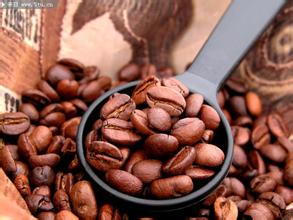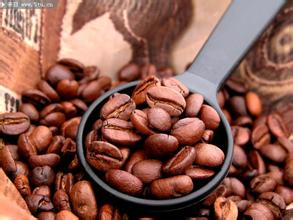Introduction to the characteristics of coffee flavor and taste varieties in Esmeralda Manor, Panama
The microclimate of the Panamanian highlands is the most important resource that makes Panamanian coffee unique. The east-west environment of the Republic of Panama converges cold air over 6500 feet through the Central Mountains, creating a variety of microclimates in the Boquete [Poquette / Poggett] and Volc á n-Candela [Kendra] regions, making it a major producer of Panamanian coffee. These unique coffees are grown in nutritious and balanced land located in the Baru volcano region.
When it comes to Panama, maybe most people only know the Panama Canal and don't know Panamanian coffee. The main producing area of Panamanian coffee is located near the Baru volcano in the west. The emerald estate in Boquete, a small town in the east of the volcano, is famous all over the world. On the west side, Vol á n-Candela is also the No. 2 coffee town, where the famous Carmen Manor is located.
It was the construction of the Panama Canal 100 years ago that attracted a large number of senior European intellectuals. After the construction of the canal, a large number of senior engineers stayed because they were infatuated with the excellent climate of western Panama, and bought a manor in Boquete, which opened the first for the cultivation of boutique coffee in Panama. But the early Panamanian coffee was not famous and produced little. But why did geisha suddenly become popular in 2004 and occupy the top coffee list for a long time? It starts with the origin of a geisha.
Species of Geisha were discovered in the Rose Summer Forest of Ethiopia in 1931 and sent to the Coffee Research Institute in Kenya, introduced to Uganda and Tanzania in 1936, introduced to Costa Rica in 1953, and Panama was introduced in the 1970s by Mr. Francis Coselazin of the Tonba Seven Farm Garden from CATIE in Costa Rica and began to grow Rose Summer Coffee.
Geisha, sweeping the coffee world with the power of a hurricane, the coffee revolution is so fierce that the blue mountains of Jamaica and Kona of Hawaii, which have long occupied the throne of the coffee kingdom, have to stay away. This wild species, which originated in Ethiopia, is now widely used in major coffee producing areas after numerous battles, and its best spokesman is the "LaEsmeralda" estate from Panama.
History of Esmeralda Farm: founded by Hans Elliot, a Swede, in 1924, Esmeralda Farm was not a coffee grower but a ranch. Forty years later, in 1964, Mr. Danielupidason's grandfather, Ruth Lover. Mr. Bidasson bought Esmeralda Farm in order to have an old home after retirement. His grandfather, Mr. Ruth Lover Bidasson, was born in Sweden and was president of the Bank of America and director of United Nations development. His son, Mr. Brais Bidarsson, moved to Panama from California in 1973 and inherited to run his father's farm. In 1987, most of the farms were changed to grow coffee. In 1994, he invested in the machinery and equipment of refined coffee in order to create a brand. Mr. Brais Bidarson and his wife Susan also raised three children, Elligu (born in Philadelphia in 1966). Rachel (born in Sweden in 1967), Danielu (born in Panama in 1974)
The unique orange flavor of Panamanian geisha, with the "orange gene kissed by God", must have benefited from the protection of good mountains and water in Panama. The low temperature and stable climate at high altitude makes the coffee here grow slowly and the beans are hard. All have a unique and strong flavor. Although geisha is good, its output is really limited. The annual production of geisha in the Jade Manor is less than 12 tons, and the top grade is no more than 200 to 300 kilograms, so it is difficult to satisfy the taste buds of coffee lovers all over the world. as a result, major well-known producing areas around the world have stepped up the trial of geisha, trying to show different landforms and different flavors of geisha.
Panama's geographical conditions from east to west allow cold air to flow through the Central Mountains at more than 6500 feet, thus forming a variety of unique microclimates in Boquete, Volc á n, Candela, Santa Clara and other places, coupled with nutritious and balanced volcanic ash soil, making these areas also become Panamanian coffee and famous producers of the world's top boutique coffee.

Important Notice :
前街咖啡 FrontStreet Coffee has moved to new addredd:
FrontStreet Coffee Address: 315,Donghua East Road,GuangZhou
Tel:020 38364473
- Prev

Introduction to the characteristics of coffee flavor and taste varieties in Saint Roman Manor, Costa Rica
High-quality Costa Rican coffee is called extra hard beans, and this kind of coffee can grow at an altitude of more than 1500 meters. Altitude has always been a problem for coffee growers. In addition, due to the high altitude drop caused by sufficient rainfall, is also very beneficial to the growth of coffee trees. However, although coffee is grown at higher elevations, there are many in Costa Rica.
- Next

Introduction to the characteristics of Flavor Coffee in Lazmus Manor, Colombia
Columbia Coffee is a representative and excellent variety of Arabica coffee. It is a traditional deep-roasted coffee with a strong and memorable flavor. Colombia, located in the northwest of South America, is a beautiful country with a long history. Indians have lived on this land since ancient times. 1531 AD
Related
- Does Rose Summer choose Blue, Green or Red? Detailed explanation of Rose Summer Coffee plots and Classification in Panamanian Jade Manor
- What is the difference between the origin, producing area, processing plant, cooperative and manor of coffee beans?
- How fine does the espresso powder fit? how to grind the espresso?
- Sca coffee roasting degree color card coffee roasting degree 8 roasting color values what do you mean?
- The practice of lattes: how to make lattes at home
- Introduction to Indonesian Fine Coffee beans-- Java Coffee producing area of Indonesian Arabica Coffee
- How much will the flavor of light and medium roasted rose summer be expressed? What baking level is rose summer suitable for?
- Introduction to the characteristics of washing, sun-drying or wet-planing coffee commonly used in Mantenin, Indonesia
- Price characteristics of Arabica Coffee Bean Starbucks introduction to Manning Coffee Bean Taste producing area Variety Manor
- What is the authentic Yega flavor? What are the flavor characteristics of the really excellent Yejasuffi coffee beans?

